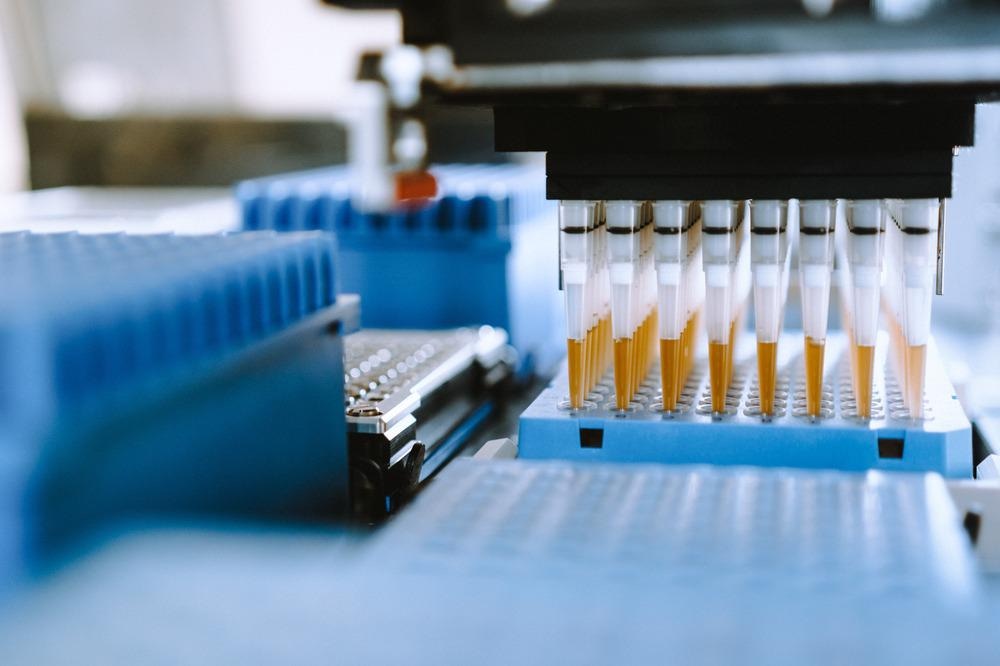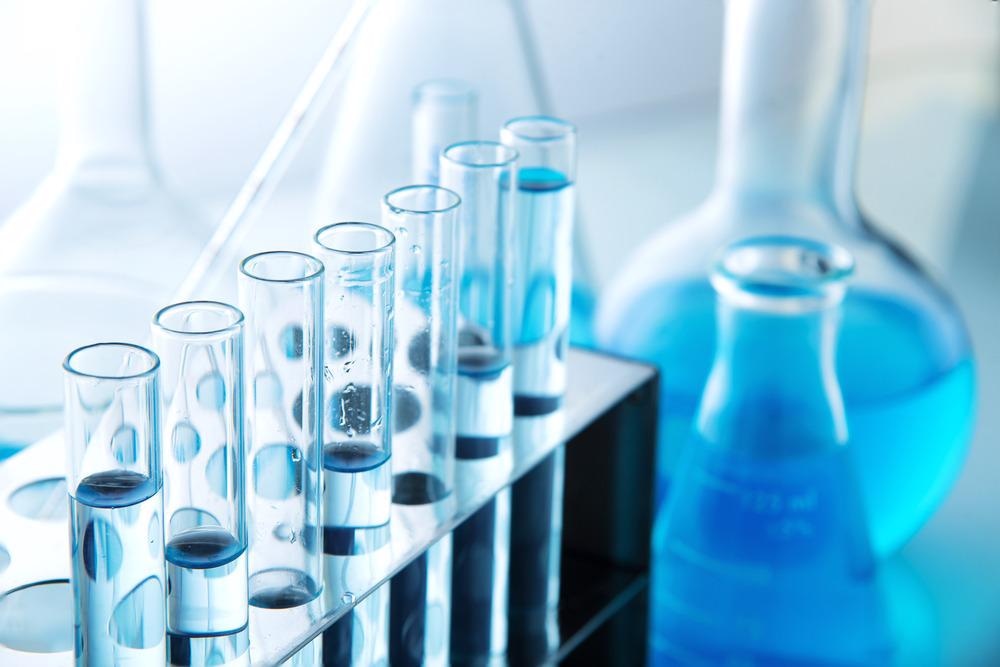Home » Health News »
Insight into Everyday Laboratory Consumables
Laboratory consumables are predominantly comprised of polymers manufactured from petrochemical-based monomers, most notably polypropylene, polyethylene, and polystyrene. Chemical substances leaching from plastic consumables is considered to be an underestimated problem in life science applications.

Laboratory consumables. Image Credit: Elpisterra/Shutterstock.com
An increased focus on increasing sustainability in labs across the world, however, has resulted in a change in perception within the scientific community, with high-quality consumables and comprehensive information provided by the manufacturer regarding additives becoming increasingly important in laboratory processes.
The Current Landscape of Laboratory Consumables
Extractables and leachables have been identified in microcentrifuge tubes. A paper published in 2021 used sensitive analytical methods: HPLC (High-Performance Liquid Chromatography), UHPLC (Ultra High-Pressure Liquid Chromatography), GC (Gas Chromatography), and MS (Mass Spectrometry) to investigate the nature of the organic substances leached from standard microcentrifuge tubes produced by a range of manufacturers into samples after incubating under typical assay conditions with water.
Results demonstrated that high amounts of organic substances migrated into samples. An analysis of these extracts demonstrated that these were predominantly typical polypropylene additives which include antioxidants, processing stabilizers, and nucleating agents. In sum, the total quantity of extractables analyzed was high to very high. These leaching effects are notable as they are known to produce negative effects on various assay systems, for example, nucleating agents/clarifiers: 3,4-dimethylbenzaldehyde and dimethyl-dibenzylidene sorbitol (Millad 3988), and similar compounds are known to produce strong absorption spectrums that resemble nucleic acids.
The results demonstrate that the majority of plastic-based laboratory consumables continue to possess various polymerization by-products besides the pure polymer. This could be the result of the addition of various chemicals to reduce production costs; with the unintended effect of altering the consumable property and subsequently affecting the accuracy of experimental results.
The Limitations of Plastic-based Laboratory Consumables
Due to the pressure to reduce single-use plastic in laboratories, the high standard for plastic-based lab consumables will likely be reduced, as efforts to decrease total polypropylene content will result in recycling-based manufacturing, causing lower-grade chemical incorporation. This will subsequently result in an inability to use recycled plastic for reactions. This is particularly true in polymerase chain reactions, the most common tool in biomolecular laboratories.
In these settings, DNA contamination from leachables can interfere significantly with either the results or the interpretation of the assay analysis. The PCR reaction requires high temperatures for denaturation, reaching up to 95°C. Single-use plastic must be able to withstand these high temperatures as well as be able to be subject to cycles of heating and cooling over a prolonged period. Recycled plastics are unsuitable for such applications, and as such will produce compromised results.
Disposable plastics are considered non-recyclable, with most laboratories disposing of them via plastic bagging, autoclaving, transporting contaminated cell culture and sending them to landfills. This includes laboratory consumables that have only carried water, as these are regarded as health and safety concerns.
The ability to recycle laboratory consumables has long been a problem faced by researchers, as they are biologically contaminated. However, this has resulted in innovative solutions to circumvent this issue. For example, the use of a decontamination station, piloted by Dr. David Kuntin at the University of York. This involved a 16-hour soak of plastics in a high-level disinfectant followed by subsequent water rinse to ensure chemical decontamination; this represents a new way of recycling laboratory plastics.
It is also possible to substitute plastic laboratory consumables with glass laboratory consumables. Glass pieces can be decontaminated by autoclaving and subsequently reused without the use of chemical decontamination. However, glass material is often not suitable for use, for example when centrifuging. However, glass represents a viable alternative in cases when non-pathogenic and cytotoxic materials are necessary.

Using Plastic-Based Laboratory Consumables More Sustainably In The Laboratory
The most commonly recycled plastics are polystyrene, polypropylene, and high density or low-density polyethylene. Polypropylene is commonly used for centrifuge tubes, while polystyrene is predominantly incorporated into culture flasks and high density and low-density polyethylene are used to produce lids. Understanding the nature of the material used to produce laboratory consumables will help laboratories become more sustainable.
Increasingly, researchers are being prompted to move away from single-use plastics in the laboratory with an estimated 20,500 institutions across the world concerned with medical, biological, or agricultural research producing approximately 5.5 million tonnes of plastic waste (estimated in 2014). Single-use plastics predominantly take the form of packaging, syringes, and beakers.
Single-use plastics as forms of laboratory consumables do present benefits in the laboratory: they are typically cheaper, can be standardized easily, and are often sterile before being used and subsequently discarded. However, single-use plastics degrade slowly, producing pieces with diameters <5 mm after being exposed to heat, ultraviolet rays, or mechanical stress. These are referred to as secondary microplastics. In addition, phthalates, phthalic acid and plasticizers, are incorporated into single-use plastics to enhance the plasticity of resin molecules, increasing flexibility and ease of processing.
These phthalic acid esters can subsequently leach into the environment causing widespread effects, including entry into the food chain. Phthalic acid esters have been detected in popular drinks in Turkey.
The manufacturers of laboratory consumables are additionally keeping pace with the change in attitudes towards consumables. Bioplastics, biodegradable plastics or polymers produced from renewable sources and biological systems, are expected to occupy a 40% share of the plastic industry by 2030.
This shift is being driven by a low carbon circular economy. The development of biomass-derived polymers which are biodegradable are intended to replace the current non-biodegradable and petrochemical-based plastic laboratory consumables. They represent a way in which researchers worldwide can reduce their carbon footprint.
Examples of such bioplastics include those which use glycolic acid, a polyglycolic acid monomer. This is the most currently used comonomer to produce poly(lactic-co-glycolic acid) (PLGA) copolymers. It provides the mechanical strength needed for laboratory consumables while enabling biodegradation to take copolymers by the US food and drug administration for biomedical application.
As such, polyglycolic acid-based copolymers may be used to produce shape-memory films, biomedical scaffolds, and antimicrobial coatings, which will increase the repertoire of useful high-performance green plastics being produced.
Such bioplastics meet the requirements of integrity and quality so that they can replace single-use plastics in the laboratories, particularly as reducing, reusing, and recycling now represents the gold standard framework centered around a circular economy that has widely been adopted by labs.
Future insights into laboratory consumables suggest that driven by a low carbon circular economy, the harmful effects of conventional plastics on the environment will be mitigated.
References
- Alves J, Sargison FA, Stawarz H, et al. Case report: insights into reducing plastic waste in a microbiology laboratory Open Access. Access Microbiology. 2020;3(3). doi: 10.1099/acmi.0.000173.
- Samantaray PK, Little A, Haddletin, DM et al. Poly(glycolic acid) (PGA): a versatile building block expanding high performance and sustainable bioplastic applications. Green Chem., 2020;22:4055-4081. doi: 10.1039/D0GC01394C.
- Grzeskowiak R. Extractables and Leachables in Microcentrifuge Tubes – Extensive HPLC/GC/MS Analysis. Available at: https://www.eppendorf.com/product-media/doc/en/625557/Consumables_Application-Note_417_Microcentrifuge-Tubes_Extractables-Leachables-Microcentrifuge-Tubes-Extensive-HPLC-GC-MS-Analysis.pdf. Last accessed January 2022.
- Ustun I, Sungur S, Okur R, et al. Determination of phthalates migrating from plastic containers into beverages. Food Analytical Methods. 2015; 8:222-228. doi:10.1007/s12161-014-9896-5.
- Alves J, Sargison FA, Stawarz H, et al. A case report: insights into reducing plastic waste in a microbiology laboratory. Access Microbiol. 2020;3(3):000173. doi:10.1099/acmi.0.000173.
- Grzeskowiak R & Gerke N. Leachables: Minimizing the Influence of Plastic Consumables on the Laboratory Workflows. Eppendorf AG, Germany. Available at: https://www.eppendorf.com/product-media/doc/en/146279/Consumables_White-Paper_026_Consumables_Leachables-Minimizing-Influence-Plastic-Consumables-Laboratory-Workflows.pdf. Last accessed January 2022.
Last Updated: Jan 31, 2022

Written by
Hidaya Aliouche
Hidaya is a science communications enthusiast who has recently graduated and is embarking on a career in the science and medical copywriting. She has a B.Sc. in Biochemistry from The University of Manchester. She is passionate about writing and is particularly interested in microbiology, immunology, and biochemistry.
Source: Read Full Article


